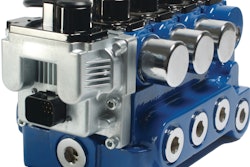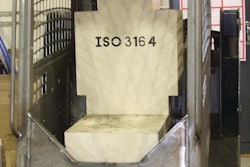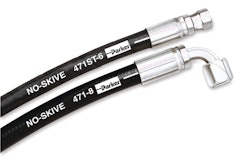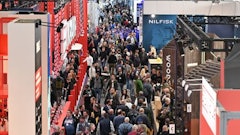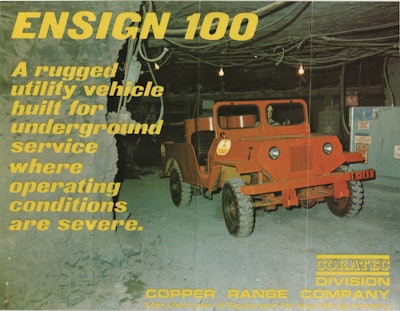
General Eisenhower said the jeep, that humble quarter-ton utility vehicle, was one of the tools that helped the Allies win World War II.
Dressed in civilian clothes, the Willys Jeep easily found work. Marketed as an industrial workhorse (as compared to today's Jeep, that fun-loving sport-utility vehicle), the Jeep stayed true to its roots, performing a wide array of different jobs, often aided by attachments and modifications. For several decades following the first civilian model, the CJ-2A, new Jeeps could be found working on farms, construction sites and airport runways.
It made sense, then, as underground mining methods moved toward wheeled equipment and supervisors grew tired of walking, that modified Jeeps would get some attention. Compact and four-wheel-drive, they could easily maneuver through narrow, low drifts. The conditions were brutal, though. On the job underground, it became evident that while the initial cost of a mass-produced unit might be attractive, mines were formidable foes to the Army jeep's descendant.
Founded in the late 1800s, Copper Range Co. was one of the oldest and largest mining firms in Michigan's Upper Peninsula. By the 1960s, work was focused on its White Pine Mine near Ontonagon, MI, which held 10% of the nation's known copper reserves.
When Copper Range closed its Champion Mine in Painesdale, MI, in 1967, the mine's extensive machine shop was kept open to support equipment working elsewhere. By the early 1970s, Copper Range's Coratec Div. was marketing its own line of underground mining equipment, including the Ensign 100 utility vehicle.
Phil Quenzi was the design engineer for that project as well as later machines in Painesdale. Quenzi worked at Caterpillar for a year before he was asked to help with the Vietnam War. A short time later, Quenzi was wrapping up a master's degree at Michigan Tech in Houghton, MI, when a professor's poor health meant a consulting job wasn't going to be finished. Quenzi filled in, and what was to be a temporary position at Copper Range became a full-time job when the firm began developing mine vehicles.
The Ensign 100 was one of his first jobs. "I learned more during a short time working on that project than anything else I've done," says Quenzi, who today runs his own engineering company a few miles from the Painesdale mine site. "I was just out of school and didn't know much about mining vehicles. I learned the hard way."
With styling reminiscent of the CJ-2A, the vehicle was "patterned after heavy construction equipment rather than automotive," said a brochure. The Ensign 100 was used at White Pine for a few years before it was offered for sale to other mines in North America. Quenzi reckons they sold as many as 200 during the 1970s.
"The utility vehicle market is a tough one," says Quenzi. "I think it's harder to make a good mine utility vehicle than a loader." Inexpensive car parts would not hold up underground, and if the vehicle was made heavy to fight abuse it was no longer a light, maneuverable machine.
The Ensign 100 was rated at 1.5 tons and was built around a frame made from 2x4x0.25 in. steel tubing, on to which a body fabricated from 1/4, 3/16 and 1/8 in. plate steel was welded. The standard power plant was Ford's 52 hp, four-cylinder 192D diesel industrial engine, although Deutz or Perkins could also be ordered.
Copper Range's Coratec operation had up to 30 people doing the fabrication, while the engineering staff was comprised of Quenzi and a draftsman. The group also built about 30 load-haul-dumps (LHD), an underground road grader for White Pine, and other innovative products.
One of the most unique Copper Range machines that never got off the ground was a self-load/unload truck. It would self-load using a bucket in front, tram to the dump site and unload from the back by opening the tail gate and pushing the load out by sliding the bucket all the way to the rear. "It worked well in confined spaces and would carry enough load to make it economical to tram fairly long distances," says Quenzi. The design was patented in 1985.
With White Pine employing 3,140 in 1974 and eventually reaching down 2,500 ft. and stretching out 25 miles, Copper Range could use most of the equipment being produced in Painesdale. Sales that did occur outside the firm were primarily through word of mouth, with Quenzi himself often following up on any leads.
As the 1970s wore on, the copper market became tough. Massive layoffs occurred at White Pine. In 1976 Copper Range was sold to Louisiana Land and Exploration Co. (White Pine would stay open until 1995). The equipment division continued on for several more years under the ownership of Northern Industrial Sales and Service Inc. One of the last production projects Quenzi was involved with was the Ranger OH 550 LHD, a compact Caterpillar- or Deutz-engined machine only 60 in. tall.
"The company could never quite decide whether or not to pursue vehicle production and put money into the program," says Quenzi. "The market eventually decided it for them, and they went out of business."
When the Painesdale fabrication shop closed, Quenzi founded Prime Designs (www.primedesignsonline.com). Since that time he has designed a number of specialized machines for OEMs throughout the Upper Peninsula. He's currently designing a 40-ton trailer for the military in conjunction with a large worldwide corporation.




